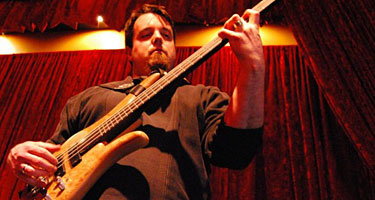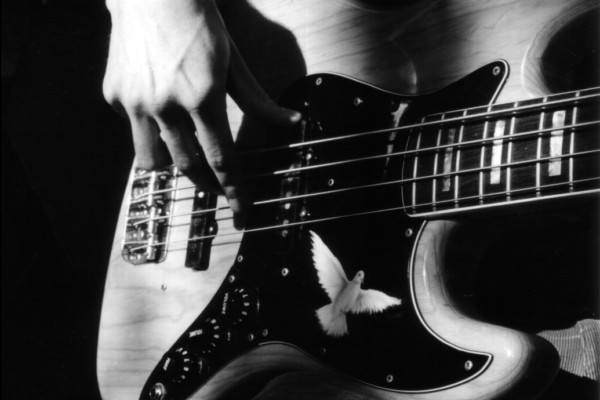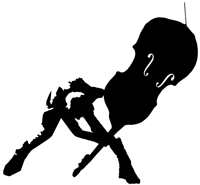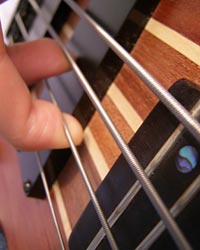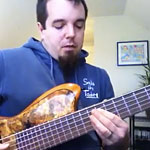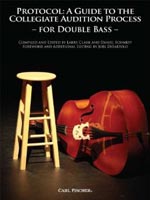How To Archives - Page 5
Technique Series: Pizzicato (Plucking) Exercises
The simple, straightforward exercises below are the best I have seen to develop and maintain right hand pizzicato (plucking) on the upright bass. They isolate the technique to focus one just one thing: your right hand technique. There is certainly room in a practice routine to work on right hand/left hand coordination, or tricky patterns, but these have proven to...
Ask Damian Erskine: Music as a Language
Q: I often hear people speak of music as a language but for the life of me, I can’t figure out how to relate to that idea and make it useful. Any thoughts? A: You’re not alone. I’ve been thinking about this a lot lately, and I’ve been in the same boat you’re in. I have chosen to think of...
Plucking Patterns: Right Hand Exercises for Bass
Q: You covered playing chords on the bass and going beyond the roots. I use chords a lot when I compose/write and when I practice different things. I often find myself short when it comes to rhythms and different strumming patterns over the chords. Do you have some good ideas for strumming patterns? A: The rhythm you use is one...
The Lowdown with Dr. D: Mastering a Difficult Passage with Repetition
In the course of mastering a difficult passage, we will end up playing the passage many, many times. However, if we do so blindly, we just waste our time. In fact, such mindless repetition can be detrimental. Additionally, if our mind wanders, then it is unlikely that we are actually improving the passage, so again we waste our time. One...
Best of 2010: Top 10 Bass How To’s & Columns
We’re counting down the 2010 Top 10 lists on No Treble this week. Today, we’re featuring the Top 10 How To features and columns, based on reader views. 1. Speaker Impedance: How to Properly Match Your Amp Head with Cabinets Amplification can be confusing to a newbie coming from a combo amp. If you are new to amps and cabs,...
Bass Chords: Going Beyond the Root
Q: Lately I’ve been trying to expand my knowledge of basic chords on bass. Any advice! A: This seems a good time to expand on a previous column about developing chords on the bass. Previously, we had really just focused on root position chord shapes. Now let’s look at some ways to get beyond that. Really, the key is being...
Fretboard Knowledge
Q: I have wanted to really get to know the fretboard inside out for a long time but have always struggled with visualizing a scale or the notes of a chord over the full range of my instrument. So I often find I’m playing in the same familiar patterns and am not really able to move freely over the fretboard....
Protocol: A Guide to the Collegiate Audition Process for Double Bass
Carl Fischer Music has released a new reference guide for college-bound bassists. Protocol: A Guide to the Collegiate Audition Process for Double Bass, compiled and edited by Larry Clark, Daniel Schmidt and Joel DiBartolo covers everything an upright bassist needs to shine in a university audition setting. The book covers the most frequently requested requirements from colleges and universities, covering...
Ask Damian Erskine: Ear Training
Q: I’d like to explore some ear training to improve my ability to hear intervallic relationships. Any good ideas? A: Simply put, ear training is exactly that: better training your ears to understand what you’re hearing. I find transcription to be the most entertaining way to develop my ears. I like to listen to what I want to transcribe over...
The Treatment: Gaining Familiarity With a New Tune (Part 2 of 2)
My jazz students and I often work through a process we call “The Treatment.” It’s a tune-based approach and I view it as a preparation for high-level study of improvisation. Once you can navigate a tune using the Treatment, you can more easily work on musical and artistic elements of improvisation. I adjust the Treatment to suit a student’s individual...
Playing Metronomically vs. Musically
Q: I have a hard time not sounding stiff when focusing on my time. Any suggestions? A: I’ve been noticing this phenomenon lately, especially with students who are working on various cello suites. There’s a tendency to try and play the piece metronomically as opposed to musically. Remember that, while we are expected to have good time, we are also...
The Treatment: Gaining Familiarity With a New Tune (Part 1 of 2)
When improvising, we are freest when we have deeply internalized a song on multiple levels. Before we can improvise the “solo to end all solos,” however, we must have fully assimilated the tune. The fewer rudimentary thoughts we must hold in our mind (such as: what scale goes with this chord?, what fingering can I easily execute? what does F#...

